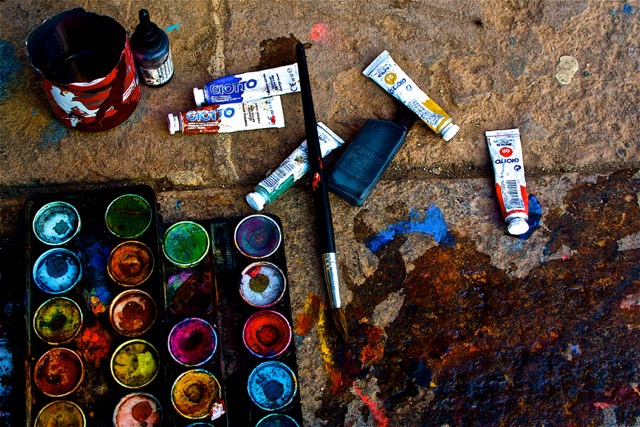A few weeks back the headline news in this country was all about a painting that sold at auction for a breathtaking $ 11.2 million dollars.
Now it’s pretty easy to say the sale of Mountain Forms by Lawren Harris – member of The Group of Seven – was the greatest testimonial to the man’s talent.
There are also those who speculate that this major feat (more than doubling the amount paid for the last record-breaking Canadian painting) will throw the international spotlight onto our vibrant cultural scene.
But, fact is, the majority of us don’t view art as this sort of commodity. Most, or many, of us do not purchase art as a financial investment, but rather as something that will brighten up the living room decor, add colour to our lives, and make beauty readily available. Even those with deeper pockets, and who chose art as an investment, generally, purchase a painting first for its visual nature.
Before looking at a price tag, a painting must appeal to the senses (first of all the eyes) and then to the emotions. Art must capture our imagination in some way, like hoar frost or a vast starry night. Colours, composition, subject and style, yes, it is all important, but the pure gut instinct of whether we like it or not is more based on a feeling than anything else.
The amount we spend on art isn’t even directly related to how much we love it. I have many pieces collected through the years, of many different values, but my true favourite was painted by a five-year-old, and it is priceless.
Art is subjective and, in so many ways, that is also its beauty. One piece will not appeal to two people in exactly the same way. Art allows us to think, whether abstract or impressionist, and it takes us to places outside of our everyday three-dimensional lives.
The moment a value is attached to art, the moment it is commoditized, perceptions are altered. No longer do we ask ourselves whether we like it or not, we begin to wonder instead if it really is worth the asking price.
In no way am I saying that art does not have a financial value. In fact, money is crucial to supporting the arts and the artists, but there cannot be an expectation that a painting will steadily increase in value, or will fluctuate like stocks and bonds. We cannot expect that Canadian art, as a brand, should now ride this exciting wave of commercial viability.
The art scene here will continue to prosper and grow, as art does, reflecting the personality and the climate in which it is created. There will still be legions of painters who eke out a living or a sideline business selling canvases for $300 – $900 (or much, much less) from the walls of the local coffee shop. This is work that is original, and viable, and available.
And yes, there are some (but far, far fewer) artists capturing tens of thousands of dollars for their images and imagination at privately-owned fine art galleries.
But, all of a sudden, multi-million dollar masterpieces will not be any more common now than they were last year or five years before that.
The only expectation we should have of art is that it affects us, in some way. It’s only then that we know its worth. We should not buy a painting only because we think it might make us money, we should simply purchase the art because it makes us happy.

Leave a Reply